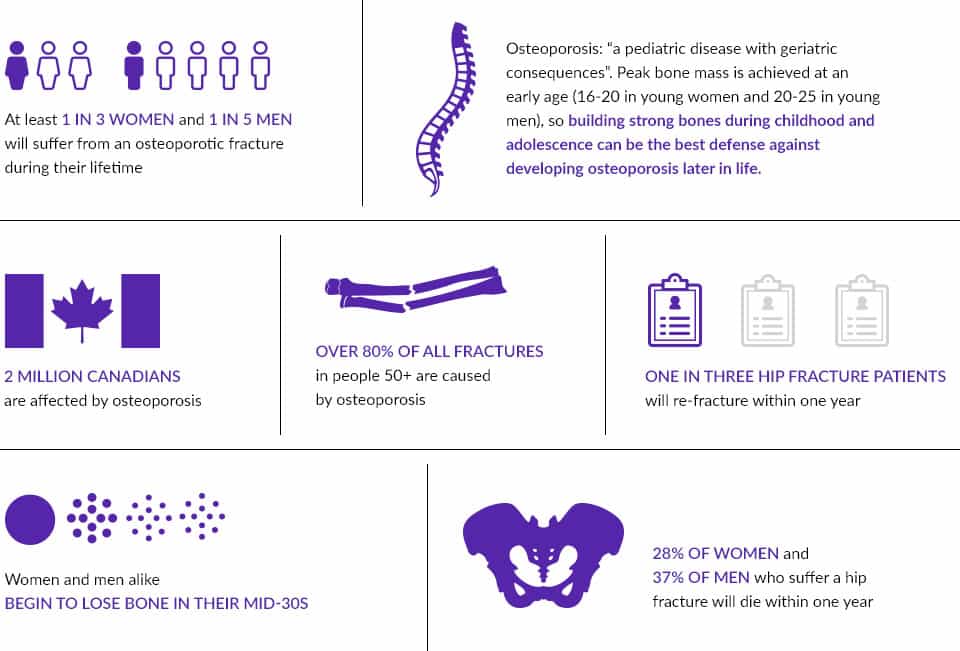Frankel, J. E., Bean, J. F., & Frontera, W. R. (2006). Exercise in the elderly: research and clinical practice. Clin Geriatr Med, 22(2), 239-256; vii.
Johnell, O., Oden, A., Caulin, F., Kanis, J.A. (2001). Acute and long-term increase in fracture risk after hospitalization for vertebral fracture. Osteoporos Int, 12(3):207-14.
Melton, L.J. III, Chrischilles, E.A., Cooper, C., Lane, A.W., Riggs, B.L. (1992). Perspective: how many women have osteoporosis? J Bone Miner Res, 7:1005-10.
PHAC (Public Health Agency of Canada). (2020). Osteoporosis and related fractures in canada. https://www.canada.ca/content/dam/phac-aspc/documents/services/publications/diseases-conditions/osteoporosis-related-fractures-2020/osteoporosis-related-fractures-2020.pdf

